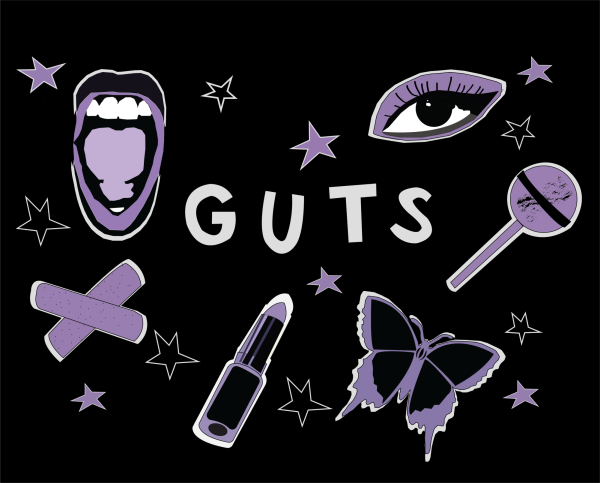Remixing his passion for music
Sophomore Jason Laramore remixes music in his spare time and has gained over 5,000 subscribers and almost 700,000 views on YouTube.
March 27, 2014
The vibrations of the music beat hard and fast against the computer’s speakers as the techno music continues to be altered by the click of a mouse adding new tones and mixes to the already produced song. Sophomore Jason Laramore has been editing music for the past two and a half years and placing his creations on YouTube. Over the years, Laramore has come to gain over 5,000 subscribers and amassed almost 700,000 views.
Two years ago at J. Robinson wrestling camp in Minnesota, Laramore began talking to his peers about his hobby of music editing. The group of wrestlers listened to Laramore’s work and in return they played music for Laramore. Laramore and the other wrestlers decided to come together and name themselves The Aviators. Soon after, he went his own way and set up his own YouTube channel, OfficialGWH, under the name Dj Gestap.
To edit music, Laramore has to use a number of synthesizers, or tools used to enhance and correct any mistakes in the music. For example, if the music has any sudden spikes in volume, the synthesizer will fix it and bring it down to a reasonable level.
“It’s a lot about having a base tone then building off of that,” Laramore said. “Then you just have to be creative.”
There are three different types of tones that Laramore uses to remix a song. A tone is an area of wave length in music. Higher tones will have higher wavelengths; lower tones will have lower wavelengths. The first tone is the square tones. These tones are mostly high pitch tones.The second tone Laramore uses is triangle tones which are mid-base tones. The final tone Lamore uses is a second level of a square tone. These tones are more base-like.
“If you don’t layer your tones, the remix will have just one tone throughout the whole thing,” Laramore said. “There will be no variety in it.”
Laramore said it is important to layer the tones in a remix so the song does not have any contradicting tones. If all the tones were not layered, the song would be a mess.
“[To edit music], you need a really powerful computer first to render all of your music,” said Laramore.
Rendering is the computer’s way of cleaning up the remix, or trying to make it as high of quality as it can be as a finished product. Rendering is not used during the remixing process; only at the very end.
Laramore said techno electronic music is his favorite to edit the most because it is much easier to work with.
“On techno music, you can direct edit, which is being able to clip out a piece of the music and place it anywhere you want or even completely remove it,” Laramore said. “You don’t have to do much synthesizing. You don’t have to do much optimizing. Optimizing is bringing out the highest quality of music by keeping all the tones compressed. It gives you less variety but it sounds cleaner. You don’t really have to clean it up very much because it’s already clean for you.”
Laramore said for instrumental music, he has to do a lot more cleaning and rendering. This process takes about 15 hours, whereas techno music takes about two to three.
Editing one song can take Laramore anywhere between 50-70 hours. The actual time Laramore spends editing is about 30 hours and the remaining 20-40 hours is when the editing is being rendered.
Laramore does most of the editing by himself. Junior Steven McPherson has begun helping Lamore out and may start a new channel with new remixes added to it.
McPherson said the idea of Laramore’s music and the different kind of remixing was what pulled him in and made him want to get involved.
“The whole tone of it,” McPherson said. “It’s pretty fast. It’s a nice mixture of music, and I wanted to become apart of that. At the time, I wasn’t really skillful at making the music, so I thought it would be a better idea to help him keep things organized and became his manager for him. ”
Laramore said his music really just started out on its own. He noticed a random spike in his views one day, and he said he believes this is due to someone discovering his music and spreading the news about it.
“It just kind of shot up from there,” Laramore said. “It was really nice to see that someone was looking at me because most people don’t get a nice start. It takes a while for most channels to start off.”
McPherson said that Laramore reaching 5,000 followers was unexpected because at the start of his music career it was very slow picking up. Over time, Laramore’s popularity on YouTube grew faster and faster.
“It just gives you a sense of pride I guess,” Laramore said. “Once you’ve hit a certain benchmark, you’ll feel good about yourself and set yourself more benchmarks to get even bigger.”
As Laramore’s manager, McPherson plans on helping him reach even more followers by advertising his music and his work in general on various social media websites. He also said he challenges Laramore to become more organized.
The deadlines that Laramore sets are for himself, since he is not working for any big company that needs the music at a certain time. Laramore said he tells himself that he needs to get certain things done by a certain time and McPherson makes sure he follows through with that.
The remixes Laramore makes stay online on his YouTube channel. The channel is not enclosed so the music on the website is free. This means that people interested in Laramore’s music do not have buy it off of iTunes; they can download it straight from YouTube.
“I don’t have a problem with [Laramore’s music being free]; I actually think it’s better that he doesn’t sell it because music is something that should be shared with the entire world,” McPherson said. “To be honest, if it was me I would sell it. I’ve told him he should sell it because people would like to buy this for a lot of money, but it’s his choice.”
Laramore suggest using Adobe Audition, which is more professional with a lot more materials than other programs. Audacity is more for beginners and also includes recordings software. Studio is another program that can be used to remix music, however, Laramore does not use it.
To do more instrumental kinds of music, Laramore would recommend a lot of recording equipment such as a boom station, microphones, wireless amps, and amp recorders.
“I think [editing is] a nice thing to have as a part of your talents,” Laramore said. “It’s something to fall back on if everything else goes bad. It’s a little something extra to have under your belt.”









